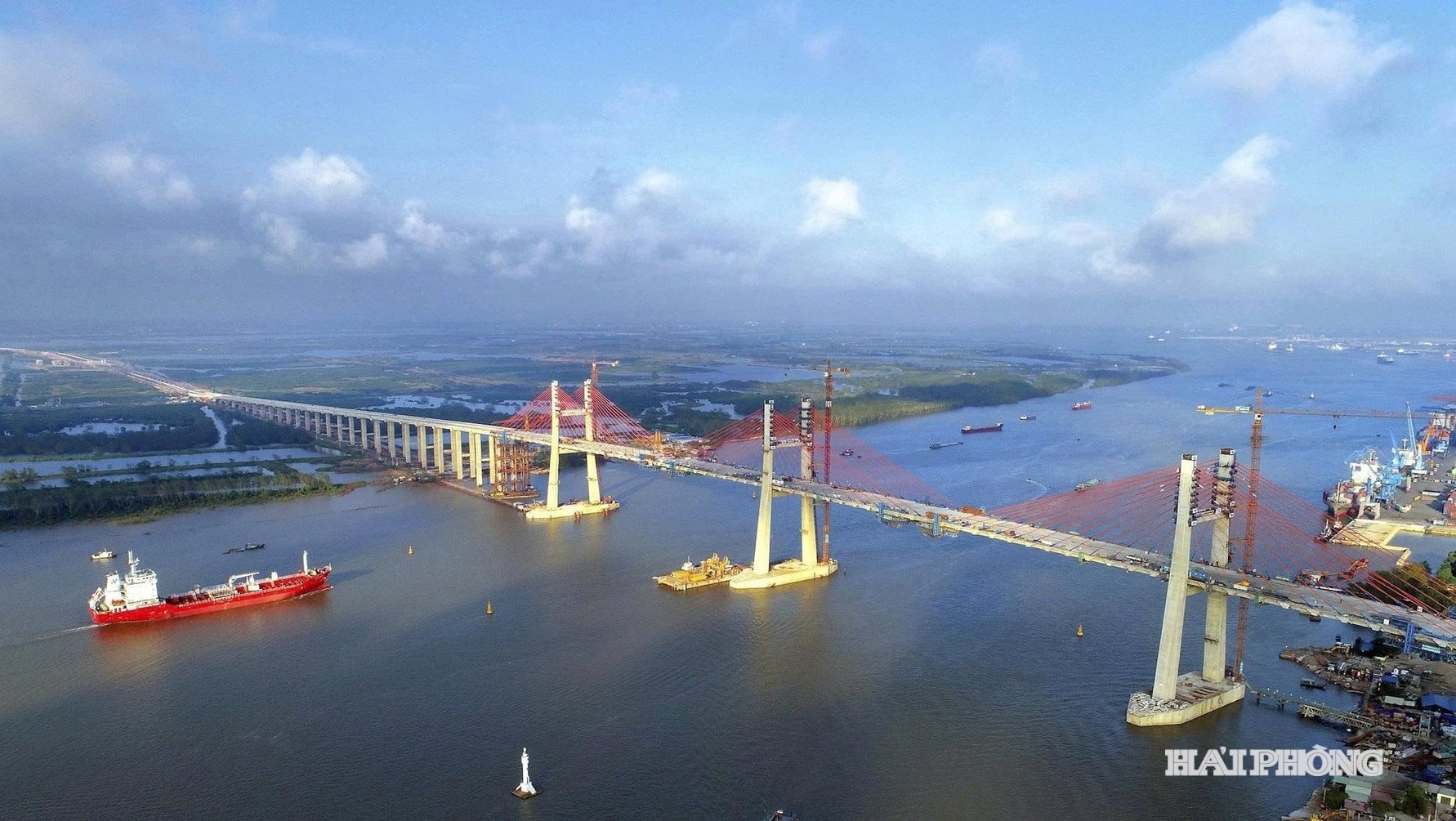
High bridge, wide channel
In many localities, many bridges have become “bottlenecks”, forcing barges and ships to limit their load or incur additional transit costs. With foresight, Hai Phong has done well right from the planning and design stages, preventing this situation from happening.
According to the representative of the Department of Construction, what makes the difference is the city's "transportation first" vision. Right from the planning stage, the bridges across the river have been carefully calculated in terms of height and navigation span. Construction standards not only meet road traffic but also prioritize maritime traffic, ensuring the safe passage of large ships of several thousand tons.
The city has many bridge projects that clearly demonstrate this thinking. Binh Bridge across the Cam River is designed with a 25 m wide clearance, allowing 3,000 DWT ships to pass through easily. Hoang Van Thu Bridge is built with a large span and reasonable height, so as not to "cut off" the very busy waterway on the Cam River. Further away, Tan Vu - Lach Huyen Bridge connecting the mainland directly with Cat Hai Island is also designed in parallel with the opening of the channel and dredging of Lach Huyen wharf area, creating conditions to welcome super-heavy container ships. Bach Dang Bridge across the Bach Dang River on the Hai Phong - Ha Long - Van Don - Mong Cai expressway, connecting Quang Ninh province and Hai Phong, also has a bridge clearance of more than 50 m... New bridges under construction are also carefully calculated for navigation conditions such as: Nguyen Trai Bridge with a clearance of 25 m and a span of 165 m; Van Bridge and Tan An Bridge connecting the two banks of Kinh Thay River both have standard clearance of more than 11 m...
Mr. Nguyen Van Phuc, owner of a barge with a capacity of more than 2,000 tons transporting construction materials on the Cam River, said: "After traveling to many places, I realized that the river routes in Hai Phong are much more convenient. The bridges are high and the channels are wide, so ships can pass easily without worrying about getting stuck in beams or waiting for water. When passing through the Hoang Van Thu Bridge or Binh Bridge area, the visibility is clear, the signal lights are clear, and vehicles can travel at night with peace of mind."
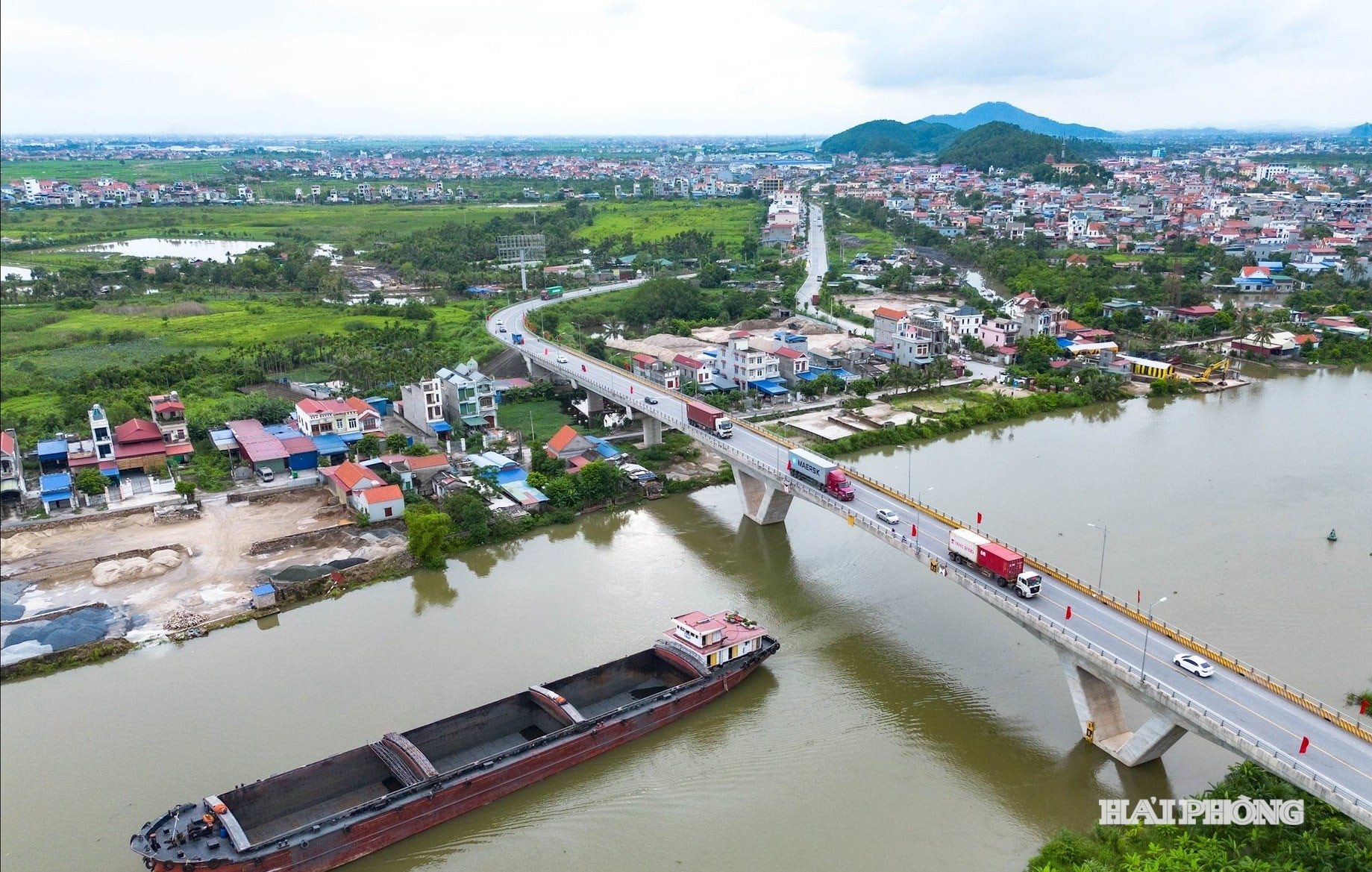
Along with the bridge, the city also focuses on the shipping channel. The channel into Hai Phong port has been dredged and upgraded many times to maintain the depth and width suitable for large ships.
In addition to investing in construction, the city also has a policy to support inland waterway transport to reduce pressure on roads. From 2023, the city will reduce 50% of fees for using seaport infrastructure for goods transported by barges and river ships. This is a strong move to encourage businesses to exploit the full potential of waterways, taking advantage of natural advantages without worrying about being "blocked" by low bridges.
Clear
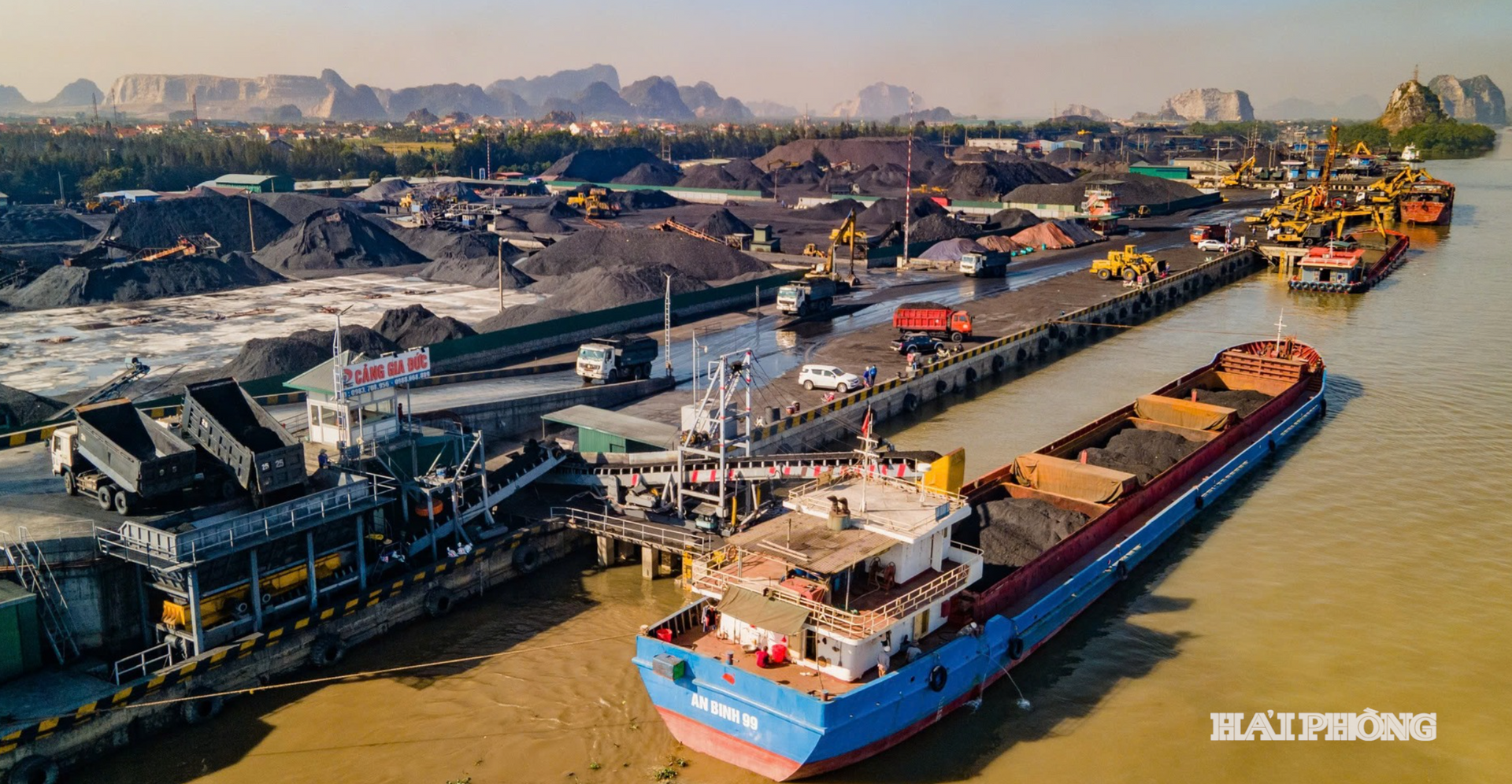
The system of high bridges and wide channels not only helps large cargo ships to move smoothly but also opens up opportunities for strong development of water transport and river tourism , which are the strengths of Hai Phong. When the bridge clearance is calculated reasonably, the waterway becomes smooth, creating conditions for cargo transport vehicles and passenger ships to operate stably and safely all year round.
According to the Department of Construction, the city currently has hundreds of wharves, inland ports and dozens of national and local waterway transport routes. Bridges such as Binh, Hoang Van Thu, Nguyen Trai, May Chai... all have standard clearance, allowing ships and barges from 1,000 to 3,000 tons to enter and exit easily. This is an important condition for the development of inland waterway transport, a green, low-cost mode of transport and the ability to share pressure with roads.
In fact, the Cam, Lach Tray, Van Uc, Kinh Thay, Thai Binh rivers… are the “backbone” of the Northern waterway transport network. From Hai Phong, cargo ships can go down to Quang Ninh, Bac Ninh, Hanoi or back to the East Sea without encountering obstacles in bridges and waterways. Thanks to the high bridge system, the transfer of goods by barges and river ships between industrial parks, dry ports and seaports takes place continuously, significantly reducing logistics time and costs.
Mr. Nguyen Trong Dai, Director of Hai Phong Inland Waterways Port Authority, affirmed: “The high bridge clearance and wide enough navigational clearance help water transport maximize its capacity. Ships operate day and night, without having to wait for the tide, reducing the risk of collision and transit costs. The high bridge also facilitates the exploitation of wharves and inland waterway ports, when large tonnage ships can enter and exit to load and unload goods safely, connecting directly with the city's seaport system.”
Along with goods, waterway tourism is also becoming a potential direction for the Port City. Many travel companies are operating cruise routes on the Cam River and Lach Tray River, connecting the city center with the tourist areas of Do Son, Cat Hai, and Cat Ba. New bridges with modern designs and high clearance create open spaces, helping cruise ships move flexibly and safely even during the rainy and stormy season. This is an advantage that few riverside cities in the North have.
Ensuring appropriate bridge clearance not only demonstrates the vision but also the determination to develop sustainable waterways, helping Hai Phong city promote its role as a logistics locomotive, while expanding the space for riverside eco-tourism. With this direction, Hai Phong is gradually realizing the goal of becoming the largest waterway transportation and tourism center in the North.
BAO ANHSource: https://baohaiphong.vn/duong-thuy-thong-suot-tao-loi-the-phat-trien-522942.html



![[Photo] General Secretary To Lam visits Kieng Sang Kindergarten and the classroom named after Uncle Ho](https://vphoto.vietnam.vn/thumb/1200x675/vietnam/resource/IMAGE/2025/10/09/1760023999336_vna-potal-tong-bi-thu-to-lam-tham-truong-mau-giao-kieng-sang-va-lop-hoc-mang-ten-bac-ho-8328675-277-jpg.webp)

![[Photo] President Luong Cuong attends the 80th Anniversary of the Traditional Day of Vietnamese Lawyers](https://vphoto.vietnam.vn/thumb/1200x675/vietnam/resource/IMAGE/2025/10/09/1760026998213_ndo_br_1-jpg.webp)
![[Photo] Prime Minister Pham Minh Chinh chairs a meeting of the Government Standing Committee on overcoming the consequences of natural disasters after storm No. 11](https://vphoto.vietnam.vn/thumb/1200x675/vietnam/resource/IMAGE/2025/10/09/1759997894015_dsc-0591-jpg.webp)

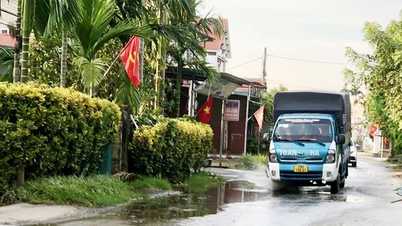





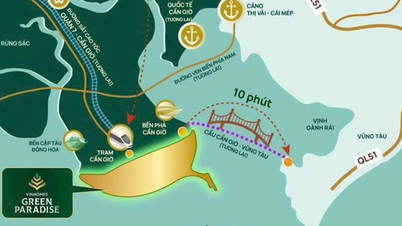



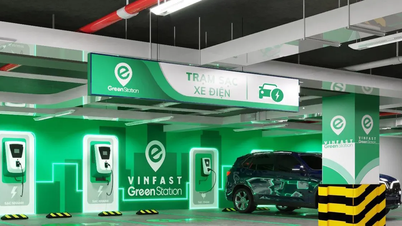










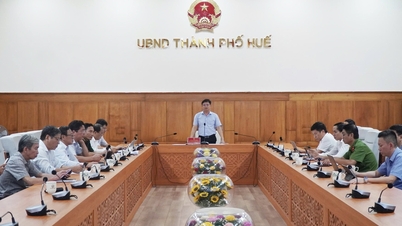





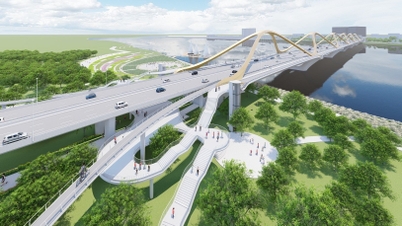
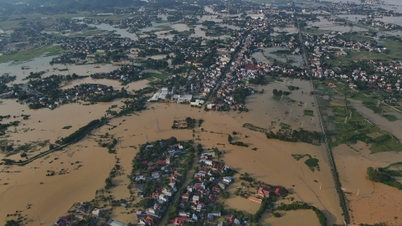

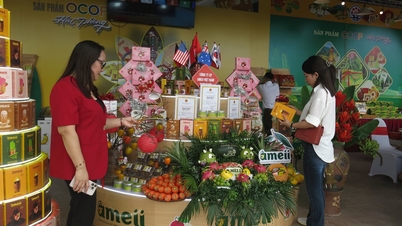



































































Comment (0)